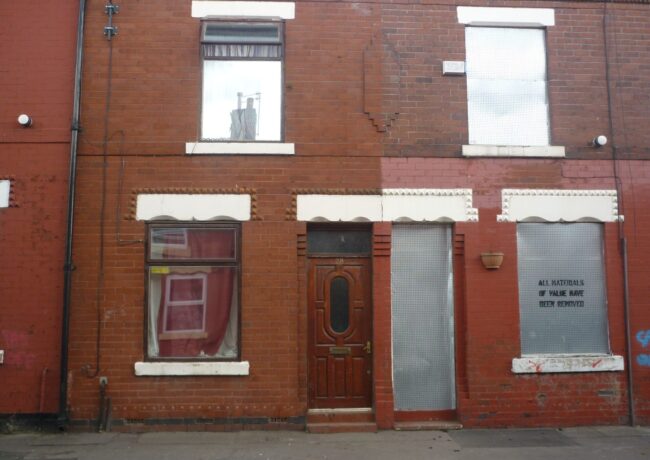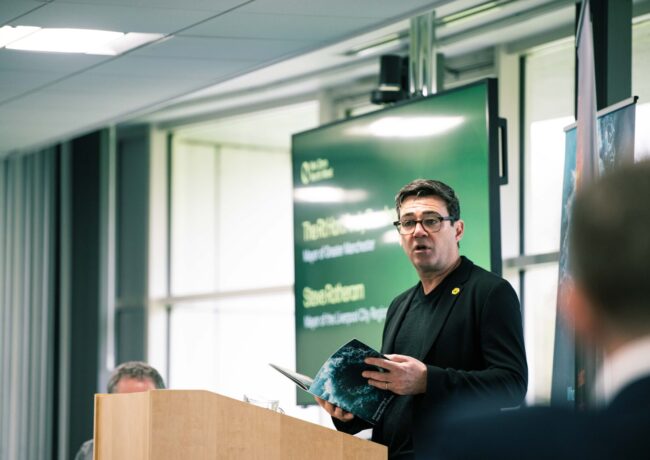Uni rebuilds terrace in lab for energy experiments
Salford University has started building a replica pre-1920s house inside a sealed testing chamber to examine the energy efficiency of old housing stock.
The Energy House project involves creating one of the synonymous Salford terraces within a three-storey sealed chamber over the next three months. ISG, the project's main contractor, is using reclaimed materials including timber, roof tiles and 20,000 bricks from recently demolished North West terraced homes. The contractor will also be adopting traditional construction techniques and skills to create the replica property.
A laboratory is being built next to the house to monitor the effects of a range of external climatic conditions, recreated by an internal weather simulation system with snow cannons and temperature and humidity devices.
Researchers will be able to accurately monitor heat loss, domestic energy usage and CO² emissions, providing an unrivalled insight into the efficiency of older homes within the UK. To accurately recreate the effect of an adjoining terrace property, ISG is actually building one and a half houses within the sealed chamber.
Steve Waterworth, the university's Energy House project manager, said: "Having announced our plans for the Energy House in May, the building is already coming out of ground. We estimate that the structure will be finished by October and we then have a four month programme to fit out both the house and laboratory.
"We aim to be fully operational by the end of January 2011 and will be presenting the first tranche of Energy House data at the UK's first conference dedicated to the issue of sustainability and retro-fitting, being held at the University in January."
Designed from the outset with in-built flexibility, various elements of the building can be easily replaced and interchanged, providing highly meaningful real life measurements. For instance, the building will be switchable from a traditional central heating system with a hot water tank to a modern condensing boiler system. Other naturally occurring variables such as missing tiles, blocked chimneys and even a build-up of bird droppings on the roof can also be introduced into experiments to examine their impact on overall environmental performance.
The country's least efficient properties are predominantly those constructed prior to 1920. These make up 15% of homes in England but account for 23% of total notional C02 emissions.





I love this – must be costing a fortune but really good idea
By Mush
Wouldn’t it be easier to build a lab around an existing old property? Although getting a builder to create a drafty, old building with a dodgy roof shouldn’t be beyond them……..
By Terry Ace